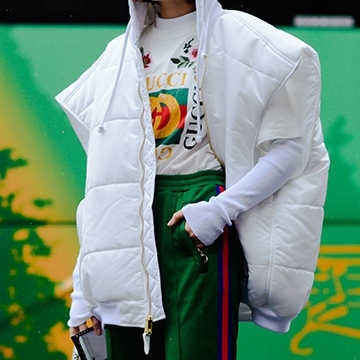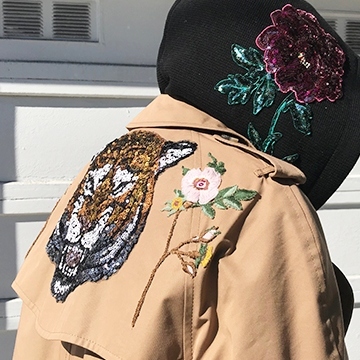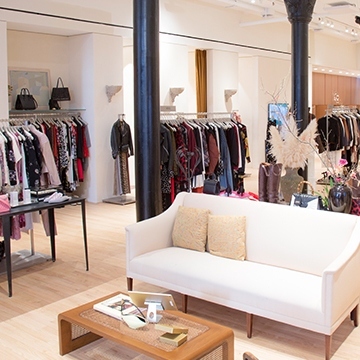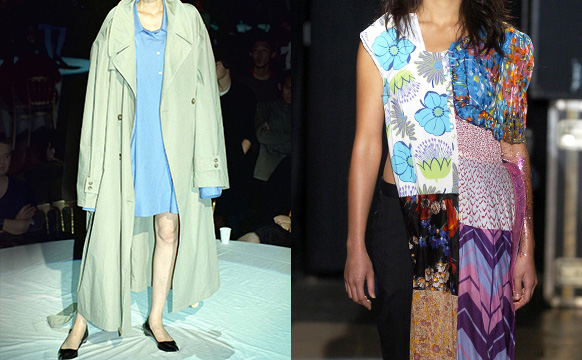
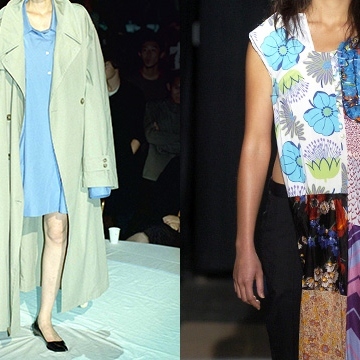
Left: Martin Margiela Spring/Summer 2000 Right: Martin Margiela Spring/Summer 2005
Expert Take: Martin Margiela’s Lasting Influence on Fashion
Martin Margiela: oftentimes credited as one of the most influential fashion designers of all time, his works challenged almost every convention within the fashion system, as well as those who consume them. It’s been approximately a decade since he left his eponymous label (no one’s really sure what date exactly he departed), yet his footprint is still visible within the brand that bears his name — and on almost every major designer working today. Given that Margiela’s work was often driven by concept (for example, his Spring/Summer 2002 collection was focused on garments made in the shape of a circle), his influence on fashion today is extremely diverse. Let’s dissect some of his most famous works and examine the origins of what we’re wearing today.
Vintage and Repurposed Garments
Margiela was known for his Artisanal line (identifiable by the circled 0 for women’s and 0 10 for men’s) created from found vintage garments which were repurposed and given new life. Oftentimes this would include vintage university merchandise – like this Harvard University sweatshirt Margiela repurposed into a bag in 1999 – several vintage graphic t-shirts patched together, two halves of mismatched blouses, a shearling jacket turned inside-out, or a pair of vintage Levi’s jeans with removed or inverted pockets. Bearing this in mind, it’s not hard to spot the influence of many of these concepts on contemporary streetwear.
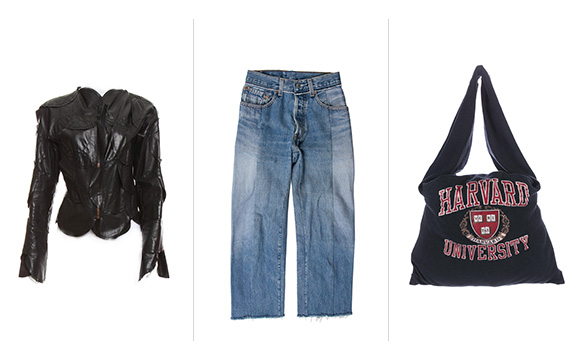 Maison Margiela Paneled Leather Jacket | Vetements X Levi’s Reworked Jeans | Maison Martin Margiela Artisanal 1999 Harvard Sweatshirt Bag
Maison Margiela Paneled Leather Jacket | Vetements X Levi’s Reworked Jeans | Maison Martin Margiela Artisanal 1999 Harvard Sweatshirt Bag
Take these Vetements x Levi’s Reworked jeans for example. Similarly Jerry Lorenzo’s repurposed vintage t-shirt line for Fear of God very much bears the spirit of Margiela’s work. The beauty of Margiela’s approach to the Artisanal line is that many of his designs are formulaic in nature and can be executed at home with a sewing machine and some vintage garments. He famously released instructions on how to make one of his sock sweaters from 1991, encouraging fans to make it themselves at home.
Oversized Silhouettes
Two of Margiela’s most famous collections were the Spring/Summer and Fall/Winter 2000 collections, both of which consisted of traditional garments scaled to unconventionally large sizes. While women’s European sizes usually range from 34 – 44, for Fall / Winter 2000 Margiela created looks in 74 and 78. The idea of wearing something that is so large it does not fit seems illogical by standard conventions, but Margiela challenged that idea and its result remains one of his most celebrated and influential design concepts.
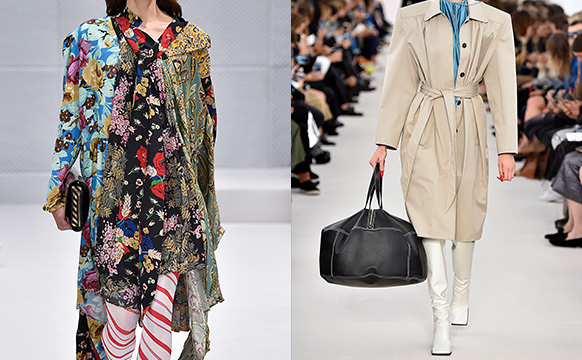 Left: Balenciaga Fall/Winter 16 Right: Balenciaga Spring/Summer 17
Left: Balenciaga Fall/Winter 16 Right: Balenciaga Spring/Summer 17
Oversized silhouettes have been dominating fashion for the past several years, once again thanks to the likes of designers like Demna Gvasalia for Vetements and Balenciaga. The influence of Margiela’s work was almost immediate though, with early adopters like Raf Simons utilizing oversized silhouettes for his legendary Fall/Winter 2001 “Riot, Riot, Riot” collection, which itself today influences many streetwear designers. In womenswear, key adopters of the relaxed silhouette like Céline under Phoebe Philo and The Row have Margiela’s tenure as creative director at Hermès from 1997 – 2003 to credit for introducing the idea that oversized silhouettes in luxurious fabrics can be elegant and beautiful.
Anti-Fashion and Authenticity
Margiela famously refused interviews and the public spotlight, and subscribed to a simplistic and deconstructive approach to his branding. He would cover the faces of models in his early shows, and would take out advertisements in the newspaper to announce the date and time of his show. The shows themselves, often held in places like subway cars or playgrounds, refuted the glamour and spectacle of the fashion industry as a whole. This ethos is encompassed by the term anti-fashion, relating specifically to a stance against the inequalities, social structures, consumption and excess of the fashion industry. Margiela’s approach to this was often humorous, such as when his shows were first come, first served seating, asking attendees to sit based on their perceived importance.
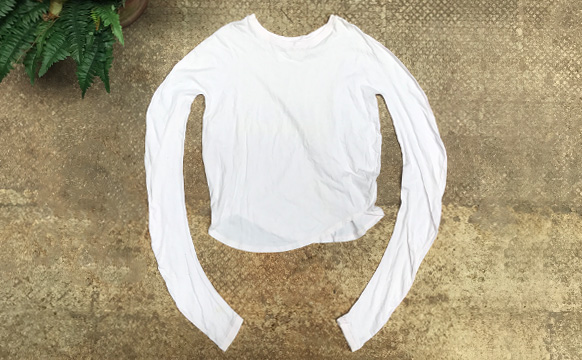 Shirt from the Spring/Summer 2002 circle collection, personal collection of the author
Shirt from the Spring/Summer 2002 circle collection, personal collection of the author


